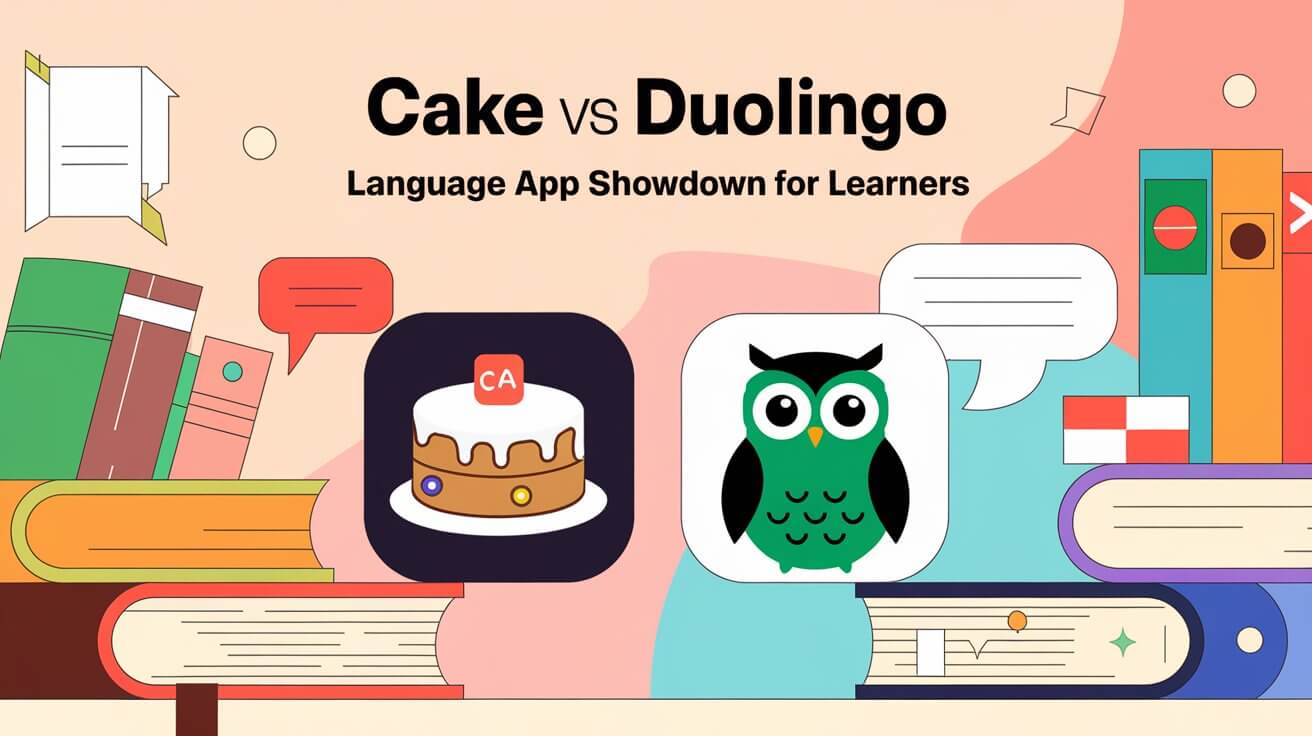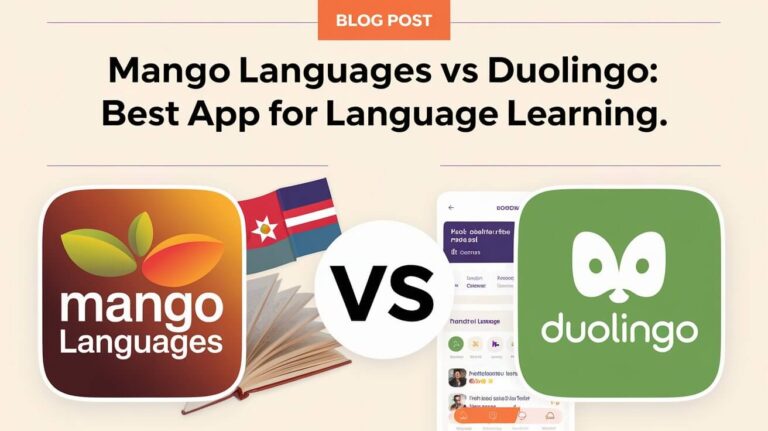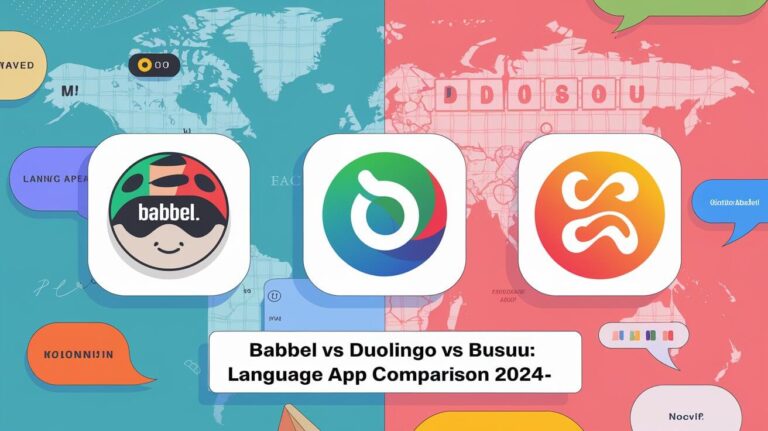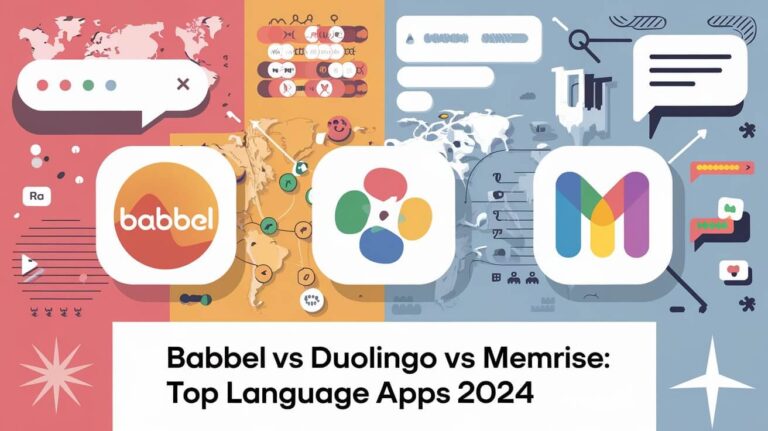Cake and Duolingo offer unique approaches to language learning, but which one is right for you? Let’s dive into these popular apps, exploring their features, methods, and user experiences to help you choose the best tool for your language journey.
Rise of Mobile Language Learning
Gone are the days of heavy textbooks and boring classroom lectures. Mobile apps have revolutionized language learning, making it accessible anytime, anywhere. Cake and Duolingo stand out in this crowded field, each with its own approach to teaching languages.
Cake and Duolingo at a Glance
Cake focuses on real-world content, using videos and authentic materials. Duolingo gamifies learning with bite-sized lessons and rewards. Both aim to make language learning fun and effective, but their methods differ significantly.
Cake: Video-Based Language Mastery
Key Features of Cake
Cake sets itself apart with its video-centric approach. The app offers:
- Over 20,000 video clips from various sources
- Speaking practice with pronunciation feedback
- Quizzes to reinforce learning
- Personalized review sessions
Learning Approach and Content
Cake believes in learning through immersion. Users watch clips from movies, TV shows, and YouTube videos, then practice through interactive exercises. This exposes learners to native speakers in real-life situations, teaching practical, everyday language.
Strengths and Weaknesses
Pros:
- Authentic, up-to-date language content
- Exposure to different accents and speaking styles
- Teaches context-specific vocabulary and phrases
Cons:
- May overwhelm absolute beginners
- Requires more active engagement than some other apps
- Free version has limited features
Duolingo: Gamified Language Acquisition
Core Features of Duolingo
Duolingo takes a game-like approach to language learning:
- Short, bite-sized lessons
- A streak system to encourage daily practice
- Cute characters and animations
- Various exercise types (multiple choice, translation, speaking)
Teaching Method and Curriculum
Duolingo breaks language learning into small, manageable chunks. Lessons build on each other, gradually introducing new vocabulary and grammar concepts. The app uses spaced repetition to reinforce learning.
Pros and Cons
Pros:
- Fun, engaging interface
- Good for building basic vocabulary and grammar
- Free version offers a complete course
Cons:
- May not prepare users for real-world conversations
- Can feel repetitive over time
- Limited explanation of grammar rules
Head-to-Head Comparison
User Interface and Experience
Cake’s interface is clean and straightforward, focusing on video content. Navigation is intuitive, with clear categories for different content types.
Duolingo sports a colorful, cartoon-style interface. The app feels like a game, with rewards, levels, and achievements to unlock.
Content Quality and Variety
Cake shines in content variety. With thousands of video clips, you’re exposed to a wide range of topics and speaking styles. The content feels fresh and relevant.
Duolingo’s content is more structured but can feel limited. While it covers a broad range of vocabulary, the sentences can sometimes be quirky or unrealistic.
Progress Tracking and Motivation
Cake shows you how many videos you’ve watched and words you’ve learned. It also offers personalized review sessions based on your performance.
Duolingo uses XP (experience points), levels, and streaks to keep you motivated. The app sends frequent reminders to practice, which some users find helpful and others find annoying.
Free vs Paid Versions
Cake offers a free version with limited content and features. Cake Plus unlocks all videos, removes ads, and provides unlimited hearts (attempts at exercises).
Duolingo’s free version is comprehensive, offering full courses without paywalls. Super Duolingo removes ads, allows offline learning, and provides unlimited hearts.
Target Audience and Learning Goals
Ideal Learner Profiles for Each App
Cake is best suited for:
- Intermediate to advanced learners
- Visual learners who enjoy video content
- Those wanting to improve listening and speaking skills
- Learners interested in current slang and colloquialisms
Duolingo works well for:
- Absolute beginners
- Those who enjoy game-like learning experiences
- Learners who prefer structured, gradual progress
- People looking to build basic vocabulary and grammar skills
Matching Apps to Language Proficiency Levels
For true beginners, Duolingo offers a gentler introduction to a new language. Its structured approach helps build a foundation of basic vocabulary and grammar.
As learners progress, Cake becomes more valuable. Its real-world content helps bridge the gap between textbook learning and actual conversation skills.
Real User Experiences and Reviews
What Cake Users Say
Many Cake users praise the app’s use of authentic content:
“I love how Cake uses real videos. It’s helped me understand how English is actually spoken, not just textbook examples.” – Maria, Cake user for 6 months
Some users note the app’s learning curve:
“At first, I found Cake overwhelming. But once I got used to it, I started learning so much more than with other apps.” – Hiroshi, Cake user for 1 year
Duolingo User Feedback
Duolingo users often highlight the app’s addictive nature:
“Duolingo’s streak feature keeps me coming back every day. It’s become part of my routine.” – Alex, Duolingo user for 2 years
Others mention limitations in advanced learning:
“Duolingo was great for getting started, but I hit a plateau. It doesn’t prepare you for real conversations.” – Sophie, former Duolingo user
Combining Cake and Duolingo for Optimal Results
Complementary Strengths
While Cake and Duolingo have different approaches, they can work well together. Duolingo provides a structured foundation, while Cake offers real-world application and listening practice.
Creating a Balanced Learning Plan
A balanced approach might look like this:
- Start with Duolingo to learn basic vocabulary and grammar
- Introduce Cake to practice listening and learn everyday phrases
- Use Duolingo for daily quick practice
- Dive into Cake for longer, more immersive sessions
Alternative Language Learning Apps
Brief Overview of Competitors
While Cake and Duolingo are popular choices, other apps offer unique features:
- Babbel: Focuses on conversational skills
- Rosetta Stone: Uses immersion techniques
- Busuu: Offers interaction with native speakers
How Cake and Duolingo Stack Up
Compared to these alternatives, Cake stands out for its use of authentic video content. Duolingo remains unmatched in its gamification approach and free comprehensive courses.
The Future of Cake and Duolingo
Upcoming Features and Improvements
Both apps continually evolve. Cake is expanding its content library and improving its speech recognition technology. Duolingo is introducing more speaking exercises and expanding its language offerings.
Trends in Language Learning Technology
The future of language learning apps likely includes more AI-driven personalization, VR immersion experiences, and integration with smart home devices for ambient learning.
Making Your Choice: Cake or Duolingo?
Factors to Consider
When choosing between Cake and Duolingo, consider:
- Your current language level
- Your learning style (structured vs. immersive)
- Your goals (basic communication vs. fluency)
- Available time for daily practice
- Budget for language learning tools
Personalizing Your Language Learning Journey
Both Cake and Duolingo can help you learn a language. Try them out and see which one you like better. You might even use both. The best app is the one you’ll use often.
Don’t just rely on apps, though. Talk to native speakers, listen to podcasts, or read books in the language you’re learning. This mix of methods will help you improve faster.
Remember, it’s not about picking the “best” app. It’s about finding what works for you. Choose the tools that fit your needs and keep you motivated to learn.








Great breakdown of the apps! Been struggling w/ Japanese for ages now. Duolingo was fun at first but got kinda repetitive. Those weird sentences about bears drinking coffee weren’t helping much lol. Just downloaded Cake after reading this. The real videos seem more practical for what I need. Wish there was an app that combined the best of both worlds tho – Duolingo’s game elements with Cake’s real content would be perfect!
this article is sooo spot on!! i started with duolingo for spanish (made it to like day 143 streak lol) but i still panic when actual spanish speakers talk to me 😅 gonna download cake right now cause the video thing sounds perfect for my problem. btw has anyone tried using both apps together like the article suggests?? seems smart but also like a lot of time commitment tbh
Hi Sarah! Totally get that feeling when real conversations happen and suddenly all those Duolingo lessons seem to fly out the window! 😄 The time commitment for using both apps is definitely something to consider. What I’ve found works for many learners is using Duolingo for quick 5-minute practice sessions throughout the day (perfect for maintaining that impressive streak!), then dedicating maybe 15-20 minutes to Cake a few times a week for those deeper immersion sessions. The combo approach doesn’t have to be overwhelming if you schedule it right. Let us know how Cake works for your Spanish journey!
Hey there! Just wanted to say this comparison really helped me out. I’ve been using Duolingo for like 6 months now but felt like I wasn’t progressing with actual conversations. Tried Cake after reading this and wow – the video approach makes so much difference! I’m actually understanding how natives speak now. Quick question tho – is Cake Plus really worth it? The free version seems kinda limited…
Thanks for sharing your experience, Mike! I’m glad the comparison helped you discover Cake’s video approach. Regarding Cake Plus, I personally find it worth the investment if you’re serious about improving your listening skills. The free version is good for trying out the concept, but the Plus subscription gives you access to their full video library and removes those pesky heart limitations. If you’re hitting that plateau with Duolingo, the premium features in Cake might be just what you need to break through to more natural conversation skills!